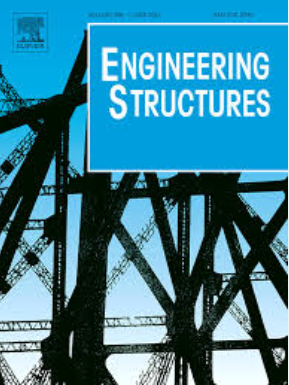Super-resolution for evolutionary probability density of stochastic dynamic responses using physics-guided diffusion model
IF 6.4
1区 工程技术
Q1 ENGINEERING, CIVIL
引用次数: 0
Abstract
The evolutionary probability density (EPD) is of great value in explaining and controlling the dynamic behavior of stochastic systems. However, for real complex systems, solving the generalized probability density evolution equation (GDEE) is a formidable task. In recent years, the development of physical-informed neural networks (PINNs) has provided new insights for solving the GDEE. Nevertheless, PINNs require random variables to follow a deterministic probability distribution; otherwise, the model must be retrained if the distribution changes. Diffusion models, known for their ability to effectively capture complex data distributions and their strong generalization capabilities, have been widely applied to image super-resolution tasks. Inspired by this, a physics-guided diffusion model is proposed in this work, where the GDEE is embedded in the proposed model as the prior physical knowledge. This model can reconstruct high-fidelity EPD of stochastic dynamic responses from low-fidelity EPD input, which is obtained using fewer data points through any distribution fitting method, thereby reducing computational resource consumption. Specifically, when the probability distribution of the random parameters of the system changes, the model parameters do not need to be retrained. Finally, three analytical models with exact solutions and a real-world engineering case are selected to validate the accuracy and effectiveness of the proposed method.
基于物理引导扩散模型的随机动力响应演化概率密度的超分辨率研究
演化概率密度(EPD)在解释和控制随机系统的动态行为方面具有重要的价值。然而,对于实际的复杂系统,求解广义概率密度演化方程(GDEE)是一项艰巨的任务。近年来,物理信息神经网络(pinn)的发展为求解GDEE问题提供了新的思路。然而,pin要求随机变量遵循确定性概率分布;否则,如果分布发生变化,则必须重新训练模型。扩散模型以其有效捕获复杂数据分布的能力和强大的泛化能力而闻名,已广泛应用于图像超分辨率任务。受此启发,本文提出了一个物理引导的扩散模型,其中GDEE作为先验物理知识嵌入到所提出的模型中。该模型可以利用任意分布拟合方法使用较少的数据点获得的低保真EPD输入,重构随机动态响应的高保真EPD,从而减少了计算资源消耗。具体来说,当系统随机参数的概率分布发生变化时,不需要对模型参数进行再训练。最后,选择具有精确解的三个解析模型和一个实际工程实例验证了所提方法的准确性和有效性。
本文章由计算机程序翻译,如有差异,请以英文原文为准。
求助全文
约1分钟内获得全文
求助全文
来源期刊

Engineering Structures
工程技术-工程:土木
CiteScore
10.20
自引率
14.50%
发文量
1385
审稿时长
67 days
期刊介绍:
Engineering Structures provides a forum for a broad blend of scientific and technical papers to reflect the evolving needs of the structural engineering and structural mechanics communities. Particularly welcome are contributions dealing with applications of structural engineering and mechanics principles in all areas of technology. The journal aspires to a broad and integrated coverage of the effects of dynamic loadings and of the modelling techniques whereby the structural response to these loadings may be computed.
The scope of Engineering Structures encompasses, but is not restricted to, the following areas: infrastructure engineering; earthquake engineering; structure-fluid-soil interaction; wind engineering; fire engineering; blast engineering; structural reliability/stability; life assessment/integrity; structural health monitoring; multi-hazard engineering; structural dynamics; optimization; expert systems; experimental modelling; performance-based design; multiscale analysis; value engineering.
Topics of interest include: tall buildings; innovative structures; environmentally responsive structures; bridges; stadiums; commercial and public buildings; transmission towers; television and telecommunication masts; foldable structures; cooling towers; plates and shells; suspension structures; protective structures; smart structures; nuclear reactors; dams; pressure vessels; pipelines; tunnels.
Engineering Structures also publishes review articles, short communications and discussions, book reviews, and a diary on international events related to any aspect of structural engineering.
 求助内容:
求助内容: 应助结果提醒方式:
应助结果提醒方式:


